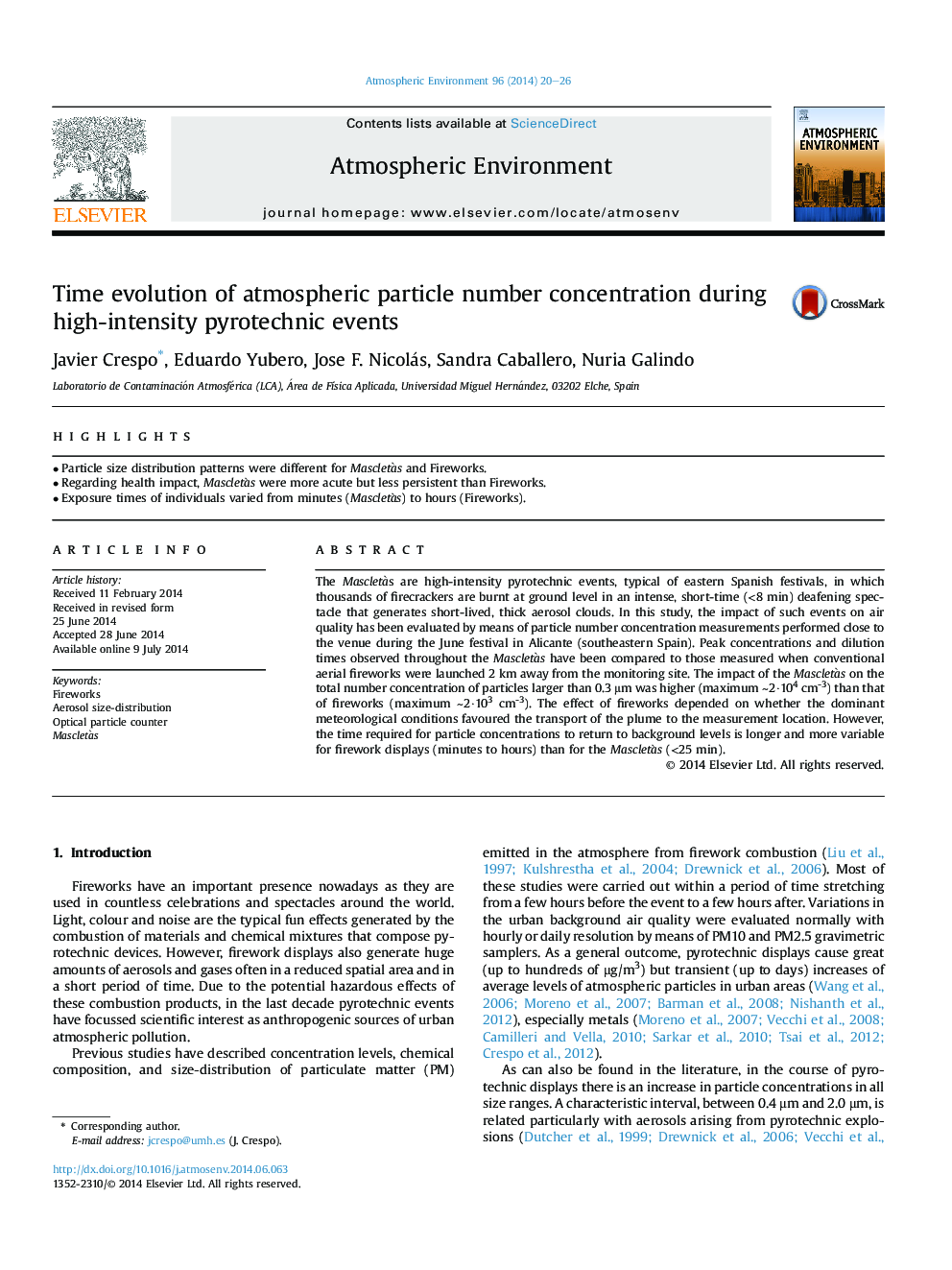| Article ID | Journal | Published Year | Pages | File Type |
|---|---|---|---|---|
| 6339890 | Atmospheric Environment | 2014 | 7 Pages |
Abstract
The Mascletà s are high-intensity pyrotechnic events, typical of eastern Spanish festivals, in which thousands of firecrackers are burnt at ground level in an intense, short-time (<8 min) deafening spectacle that generates short-lived, thick aerosol clouds. In this study, the impact of such events on air quality has been evaluated by means of particle number concentration measurements performed close to the venue during the June festival in Alicante (southeastern Spain). Peak concentrations and dilution times observed throughout the Mascletà s have been compared to those measured when conventional aerial fireworks were launched 2 km away from the monitoring site. The impact of the Mascletà s on the total number concentration of particles larger than 0.3 μm was higher (maximum â¼2·104 cm-3) than that of fireworks (maximum â¼2·103 cm-3). The effect of fireworks depended on whether the dominant meteorological conditions favoured the transport of the plume to the measurement location. However, the time required for particle concentrations to return to background levels is longer and more variable for firework displays (minutes to hours) than for the Mascletà s (<25 min).
Keywords
Related Topics
Physical Sciences and Engineering
Earth and Planetary Sciences
Atmospheric Science
Authors
Javier Crespo, Eduardo Yubero, Jose F. Nicolás, Sandra Caballero, Nuria Galindo,
